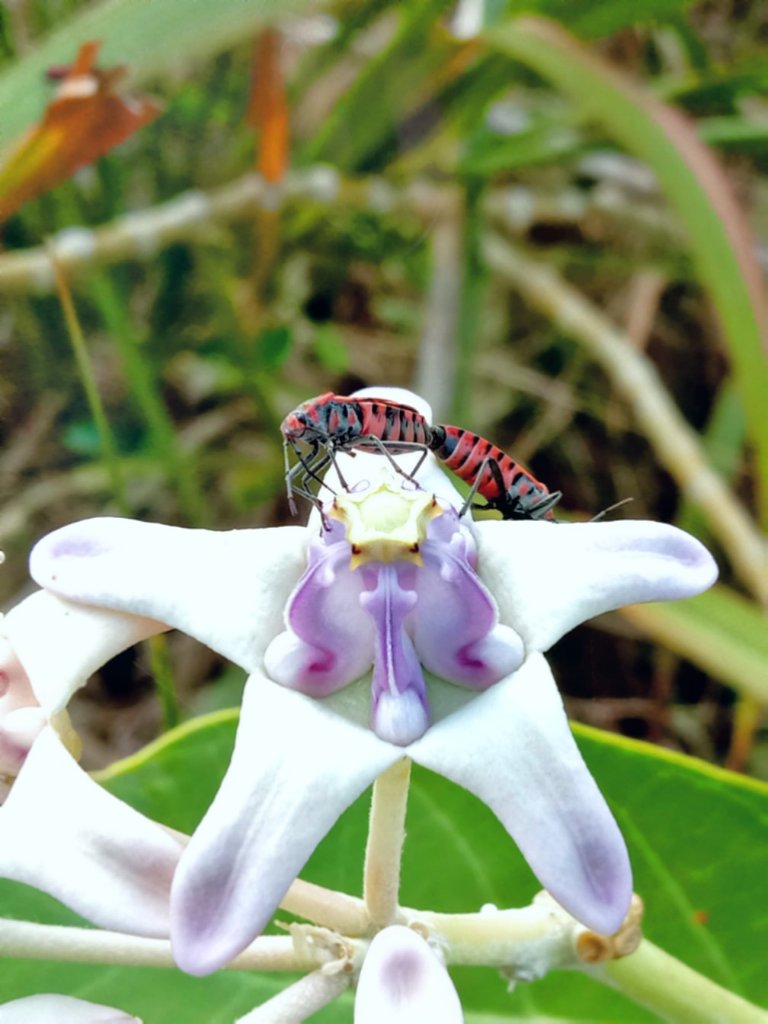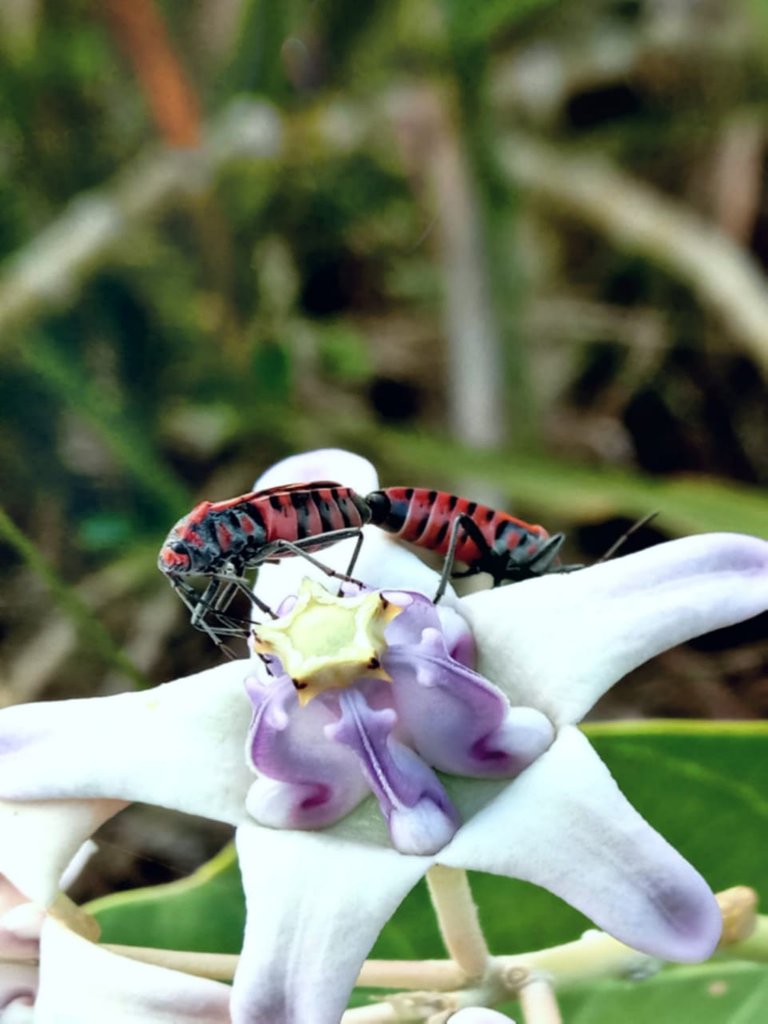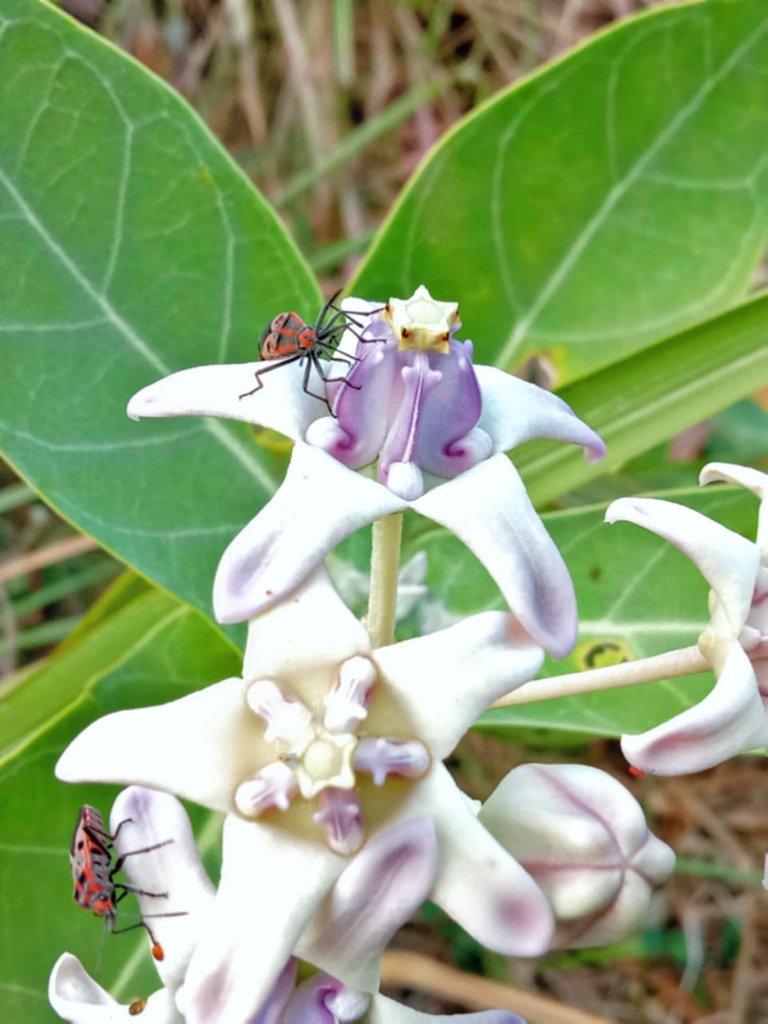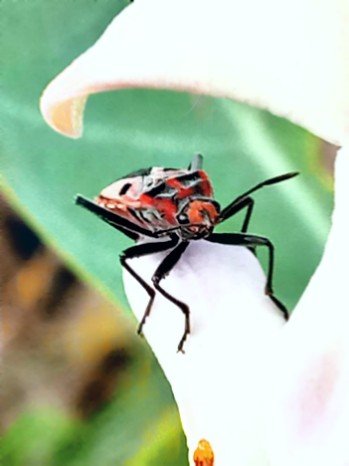Hello all !!!
When we visit one of the locations of vacant land, of course, often encountered by these wild plants, it is said that these plants are poisonous if consumed by humans, of course, the impact is very frightening if swallowed by the sap of duan. Then on the sidelines of this plant is certainly often encountered several pairs of animals belonging to the species of insects known as ladybugs or local people say as Kameeng rydeer.

Scientifically it is not known whether this plant has poisonous sap, but there is a confusing explanation in observing it. But according to my personal view of this plant has one uniqueness that is every wild plant there is of course very often encountered several pairs of ladybirds or kameeng rydeer.
One of them is this plant. These wild plants are very often used as a nest for a pair ladybug of leaves, or rather to say, a nest. But in my view kameeng rydeer also very often drinks or decorates any liquid that comes out on the stems or leaves of this plant.

Its presence in this wild plant is one of the nests that are often used by Ladybug Leaves, they will multiply each of them on these plants. In a study it was said that their presence in this plant is where they multiply offspring, and become food grounds for their community, which means they will eat the leaves. However, according to the writer's own observations, they only suck the sap contained in every spark of water that comes out through the pores of plants.
Sometimes when they have intercourse they are constantly sucking the sap of plants in between their own relationships. You can see it when it is on the side of the plant.

Then why is it said as a plant pest
It is said to be a pest because of their characteristics when they lay eggs, eggs will be placed on the stem of the host plant, so that when the eggs hatch the baby Ladybug Leaves will eat the stems of the plants so that the plants experience a slowdown in breeding. Plants inhabited by baby Ladybug Leaves will experience periods of slow growth so that the plant will eventually die.
The stems of the host plant or stem contents are filled by each new Ladybug Leaves baby which hatches and they will come out on the surface when they are one week later.
Within a week the baby Ladybug Leaves was able to eat every stem as much as they needed if it was calculated then found a number of 1: 5 so that by this ratio can damage the stem of the host plant.

If we calculate with simple mathematics every week they are able to damage the stems of a plant at a maximum of one plant stems so if they are as many as 10 pairs then they are able to damage the stems of 20 host plants.
In contrast to its parent, its presence only sucks and consumes every leaf that has grown and in the opinion of the farmers it does not become a problem because the presence of its mother only sucks its sap, but the problem is the eggs placed in the plant's stem.
Although it is categorized as a pest for plants that are being managed by farmers, what is most feared is pests or planthoppers in the form of grasshoppers.
Because the speed of grasshopper chewing is faster when compared with ladybug leaves. So thus the presence Ladybug of Leaves is not as bad as the others because their presence only makes a nest on each plant, and that can still be overcome by simple tips that are owned by the farmers.
Continue....
Description of the post
| Photografer | @syuhada73 |
|---|---|
| Location photos | Medan, Indonesia |
| Camera | MI Note 7 |
| Themes | Relationship of plants and Ladybug Leaves |
| Reference | own writing |
Congratulations, your post has been upvoted by @dsc-r2cornell, which is the curating account for @R2cornell's Discord Community.